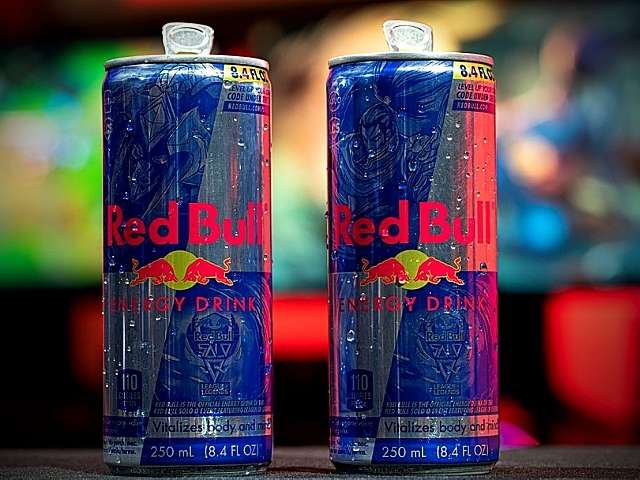
In this article, you will learn about the history of Red Bull, a company that revolutionized the world of beverages and marketing. Whether you like the product or not, it is almost impossible for you not to know it; either because you’ve seen the can, or you’ve seen the advertising.
Without further ado, let’s get started…
Red Bull history
After graduating from business and economics in 1972 in Austria, Dietrich Mateschitz, future co-creator of Red Bull, worked in different companies such as Unilever and Blendax. And on one of his business trips to Thailand, he was introduced to a drink called Krating Daeng, based on Lipovitan tonic (whose main ingredient is taurine).
Its creator was Chaleo Yoovidhya, who met Mateschitzen in 1976, thanks to the fact that the Krating Daeng it took away Mateschitzen’s jet-lag and piqued his curiosity. Finally, in 1984 they decided to merge Mateschitzen’s marketing knowledge with Chaleo’s product knowledge, to form a partnership.
The first thing they did was create a “foreign” version of the Krating Daeng, called Red Bull, for which Chaleo shared the original formula, but with flavor adaptations to make it more appealing to Western consumers. Each contributed $500,000 and received 49% of the share; the remaining 2% became part of Chaleo’s son. And at that point, it was agreed that Mateschitzen would run the company, and Red Bull Energy Drink was born.
a big hurdle
The norm in the birth of large projects is that in many moments things do not go as they are. In fact, disruptive products are characterized by having to overcome a large number of problems and obstacles. And the Red Bull story is no exception.
In the East this type of product was sold in pharmacies (in fact, Chaleo owned a pharmaceutical company call TC Pharmaceuticals). But in the West there was no record of a similar product.
This caused the Austrian authorities, frightened by the risk of possible addiction due to the caffeine and taurine content, to impose numerous scientific tests. The commercialization of Red Bull in Austria was only possible after 3 years, in 1987.
Finally, the bull passed the barrier.
Red Bull history timeline.
- 1987: Entered the market.
- 1994: They sponsored the first two international athletes.
- 1995: Entered the UK market.
- 1997: Entered the North American market.
- 1999: Creation of the first international Kitesurfing competition.
- 2005: Debuted as a Formula One team.
- 2006: The NASCAR Red Bull racing team was founded.
- 2007: Red Bull Records was founded.
- 2009: First victory for the Red Bull Racing team.
- 2012: Red Bull Stratos (You will find the video below)
- 2015: Grabbed 43% of the energy drink market share.
- 2018: Launched a new line of organic soft drinks.
- 2019: Sales soared to a record 7.5 billion cans worldwide.
Creating Path: The Secret of Red Bull’s History
In the 80’s there was no category of “energy drinks” and competing with soft drinks and soft drinks was a very risky bet, since Red Bull and traditional drinks were very different, and the market was completely saturated.
Mateschitz decided to play on a plane without competitors, where he could not be compared and his chances of success were greater. So created the category of “energy drinks”. What ultimately allowed him to enter a blue sea and leave his mark on marketing forever.
A fundamental step was to understand through market research who their ideal customers were: Men between 18 and 35 years old, and they knew exactly where they were.
Universities and bars were the focus of Red Bull’s marketing. The strategy was to go and give away free samples, planting a seed that would germinate thanks to word of mouth.
Simplicity: The key to growth.
For much of Red Bull’s history the product has been pretty much the same: Same can, same size, same flavor. They didn’t need to spend time and resources searching for other variants; unlike its “competitors”.
Brands like Coca Cola and Pepsi were pigeonholed in bringing to the public new alternatives that distracted users from the main product, but Red Bull was very clear that its objective was to keep consumers’ eyes on that 355ml blue can.
However, that simplicity mentality could work against him, since his only product was easily replicable. Therefore, they opted for a Marketing strategy that their competitors could not “plagiarize” from one day to the next.
Remember this? “Red Bull gives you aaaaaaalaas”
This slogan recognized by the majority, I didn’t sell a product, I sold a lifestyle. This is also reflected in the strong investment that Red Bull makes in extreme sports, athletes and events of all kinds.
As for sports, Red Bull has its own Formula 1 team, more than 3 soccer teams in different leagues around the world, a sailing team, surfing, skateboarding, motorcycling teams in different categories… anyway. That without counting the number of athletes they sponsor.
Additionally, the events have taken brand recognition into the stratosphere…literally…with the Red Bull Stratos:
They also receive a great deal of recognition for Red Bull International: Batalla de los Gallos.
Red Bull understands very well what its customers want and knows exactly how to give it to them.
Lessons from the history of Red Bull.
The first is your ability to tell a story that engages your audience. His focus on everything from extreme sports to music festivals; It gives them a wide field of action.
Additionally, Red Bull puts their product second and the content and value they can deliver to their audience first. The attention to detail your marketing team pays is evident. They know exactly where to take the steps, because they never forget the objective; that is the most valuable.
Lastly, there is their commitment to the values and aesthetics created from the first can, which makes their marketing work so well. All strategies are based on “giving wings”. And if you think about it, almost all human beings would like to be able to fly 🙂
Red Bull today.
Red Bull currently has more than 10,000 employees, a presence in more than 150 countries and since its inception, it has sold more than 7,500 million cans.
As of 2020, Red Bull is ranked 228 among the best employers worldwide and 69 among the most valuable brands; according to the Forbes portal.
On the creators’ side, Dietrich Mateschitz is located in box #56 of the billionaires worldwide. And Chaleo, who passed away in 2012 of natural causes, died the richest man in Thailand.
Conclution.
Whatever your idea is, it is very likely that you will succeed as long as you understand who your target audience is. Even a product with no market can have an audience! Red Bull proved it.
It is also important to emphasize that the product you have in mind does not have to be something completely original. Red Bull was an adaptation of something already existing, but Mateschitz had the acumen to take it to a new terrain where he was not competing against anyone.
I hope that the history of Red Bull gives you motivation to continue fighting for your projects and that you are very [email protected]
And remember, if you are really interested in creating your own business, you can read our book “How to create a company while working: Discover how to manage your time, manage your money and motivate yourself while creating a company and working for another” , where you will find all the information you need to found your own company, without having to leave your job.


